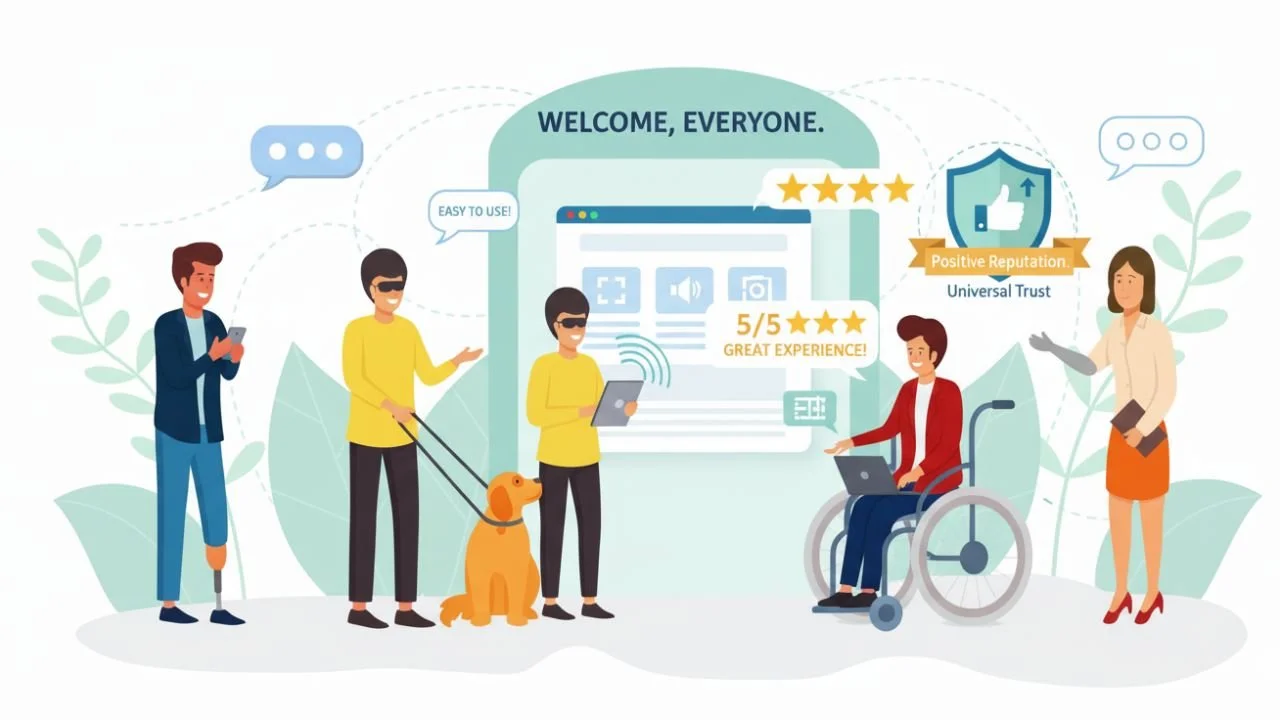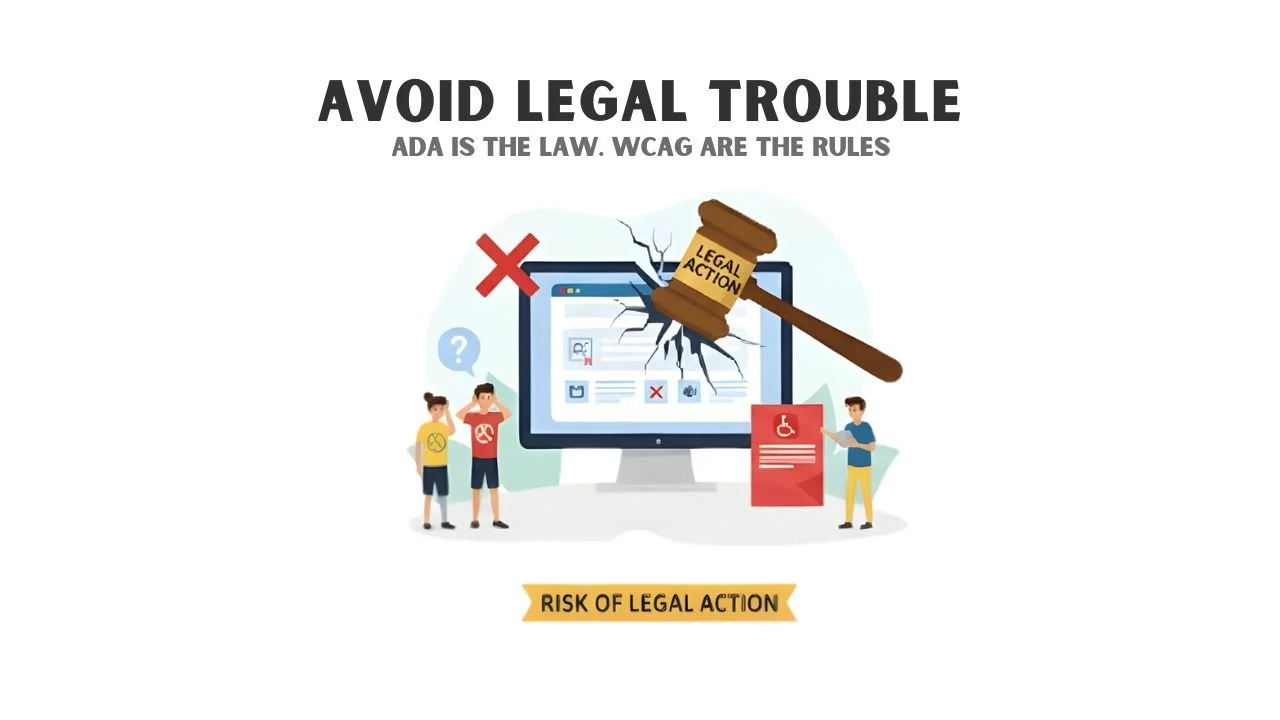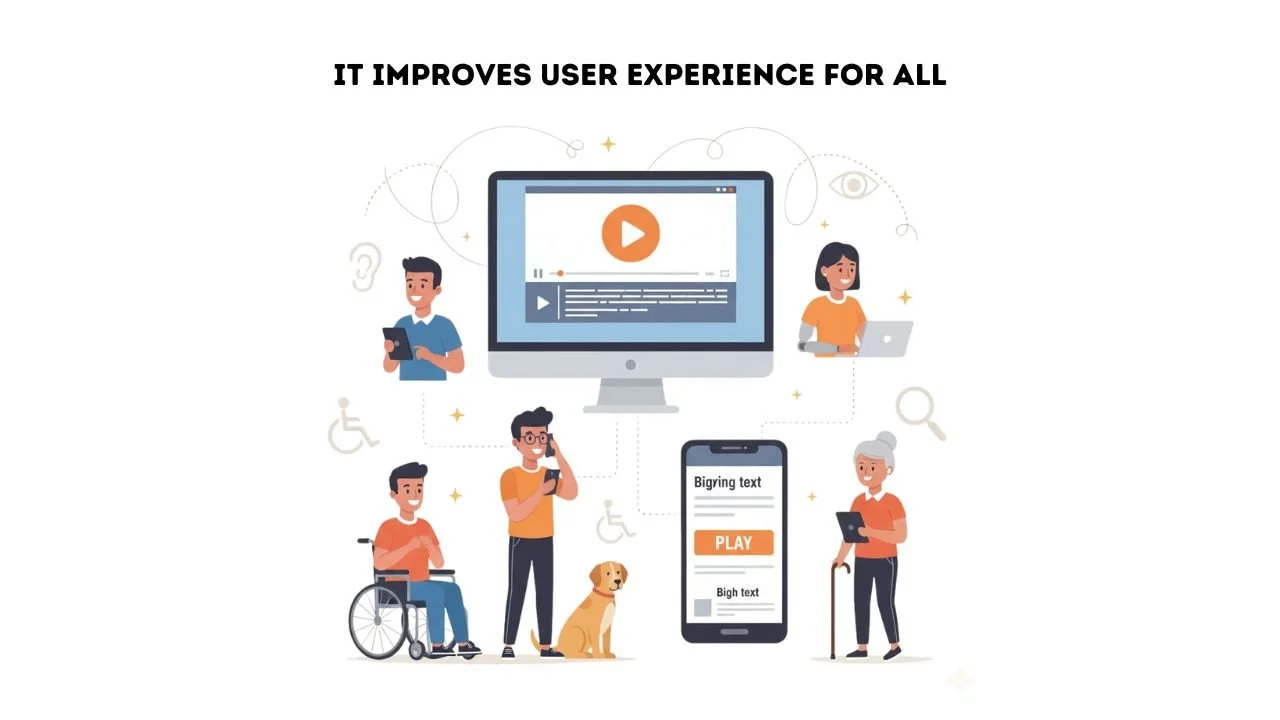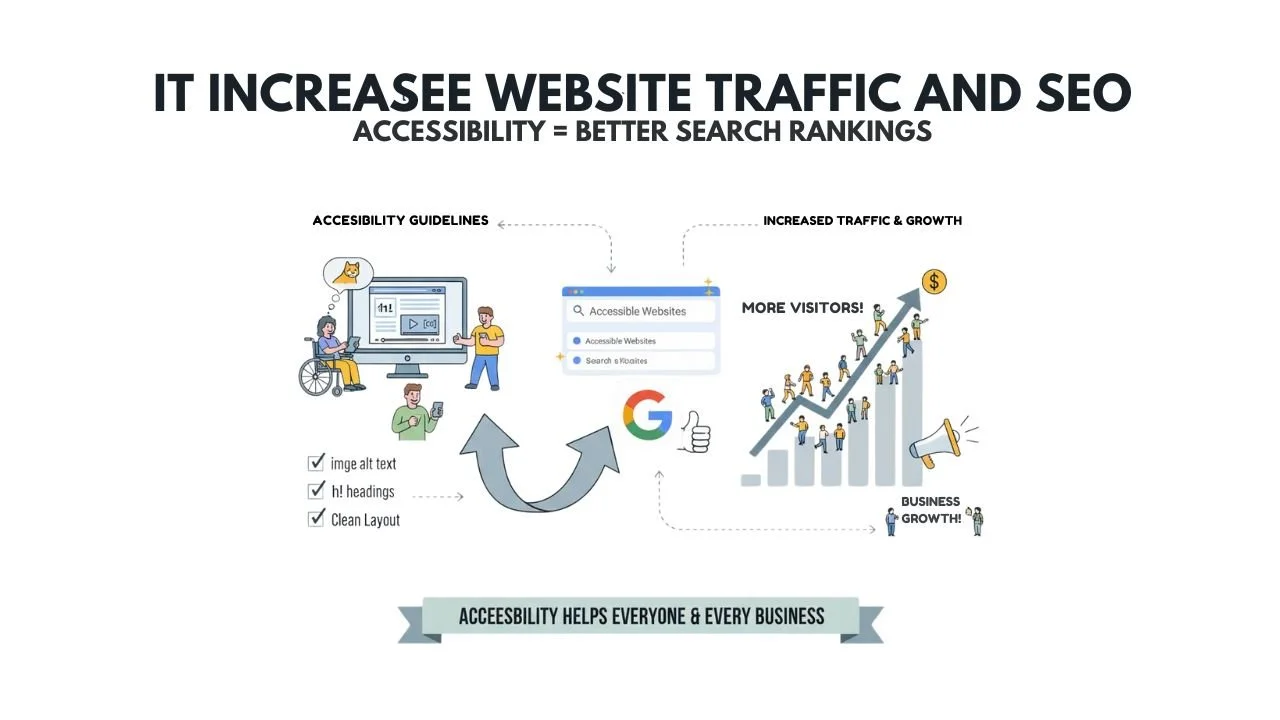7 Reasons ADA Compliance Matters for Your Website
The Internet brings people together. We all use it every day to learn new things, order our favorite food, work, and communicate with friends and family. Now, think about this - what would happen if a person were unable to access a website simply because that site was not usable by him/her? It would seem unfair, wouldn't it? That is why it is very important to make all websites ADA-compliant, so that everyone can enjoy the internet without any hassle.
That’s where ADA and WCAG compliance comes in. These are rules that make sure websites can be used by everyone — including people with disabilities. When a website follows these rules, it becomes easy, friendly, and open for all users.
At Inclusive Web, we believe that making every website accessible isn’t just about following rules — it’s about doing the right thing following website compliance best practices and making the internet open for everyone. Accessibility means that every person, no matter their ability, can browse, read, shop, and connect without any hassles.
Let’s look at 7 important reasons why ADA compliance matters for your website in today’s digital world.
1. It Helps People with Disabilities Use Your Website Easily
When a website is made to help people with disabilities, it becomes easier for everyone to use. A person who cannot see well can listen to the content through a screen reader, and someone who cannot use a mouse can move through pages using the keyboard.
These types of small changes still make a big impact. ADA-compliant websites help people with Disabilities to feel welcome rather than excluded. It allows everyone to visit, read, or shop on your website without hassle—and this is what we want for every website.
2. It Builds a Positive Reputation
When a company cares, they will never forget. A site that is ADA and WCAG-compliant shows that we care about every visitor, no matter who they are.
When people see that our website is easy for everyone to use, they feel more connected and respected. It gives our brand a positive image and builds long-term trust.
A website that welcomes everyone automatically becomes more likable and trustworthy.
3. It Helps Avoid Legal Trouble
The ADA (Americans with Disabilities Act) says that online spaces must be open and easy for everyone to use — just like shops, schools, and offices.
If you're not in compliance with accessibility standards, your site or organization might have some legal issue or complaints. So it's important to know the difference between "ADA compliance" and "WCAG." The ADA is the law, but the WCAG provides all the step-by-step rules for complying with that law.
By following these guidelines, we make sure our websites stay safe, fair, and welcoming to everyone.
4. It Improves User Experience for All
Accessibility doesn’t only help people with disabilities — it helps every single visitor.
Think about captions on videos. They help people who can’t hear, but they also help when someone watches a video in a noisy place.
Big, clear buttons and easy-to-read text help people who are in a hurry or using small phone screens.
When our sites follow ADA and WCAG compliance, they become smoother, simpler, and more enjoyable for everyone.
5. It Increases Website Traffic and SEO
Websites that are organized, well-structured and easy to use get more love from Google. That is because search engines generally prefer websites that are simple, organized and fast.
When we follow accessibility guidelines, we instinctively enhance SEO. Things such as image alt text, appropriate headings, and clean layouts aid in getting our pages higher in search results.
So making a site accessible not only helps people — it helps businesses grow, too.
6. It Encourages Customer Loyalty
People return to websites that feel easy and comfortable. Accessibility plays a big part in that.
When visitors can easily navigate, read and click, they feel valued. They will most likely return there as well as recommend other people to our site.
Simple design choices — like readable fonts, clear menus, and good color contrast — can turn first-time visitors into loyal users.
7. It Makes the Internet Fair for Everyone
Accessibility isn’t just about design or coding. It’s about giving everyone equal chances to connect, learn, and grow online.
By following ADA and WCAG compliance, we create websites that everyone can use. Whether students are learning online, teachers are sharing their lesson ideas, professionals are conducting their work, or families are browsing the web together - every user can have an accessible experience. Compliance isn't just a guideline, it's a responsibility.
When we make our websites accessible, we also improve accessibility for students, enhance data accessibility, and help more people access valuable online content.
It’s not just a rule — it’s a responsibility.
ADA vs. WCAG: Key Differences You Should Know
Many people think ADA and WCAG mean the same thing, but they don’t. The ADA is a law that says everyone should have equal access, including online.
The WCAG (Web Content Accessibility Guidelines) is how to make that happen. It gives you the exact steps, like adding text for images, using clear colors, and making the navigation better.
So, ADA compliance vs WCAG is like the difference between the rule (ADA) and the instruction manual (WCAG). Following both means our site is safe, user-friendly, and fair.
ADA Compliance Levels: Which One Your Site Should Meet
Accessibility comes in three levels:
Level A: Basic fixes — covers simple accessibility needs.
Level AA: The level most websites aim for — good balance between effort and accessibility.
Level AAA: The highest level, but not always easy for all sites.
We recommend aiming for Level AA because it meets legal standards and gives the best user experience.
Conclusion
In today's world, accessibility is not purely an option, it is now an obligation. The intention of ADA and WCAG is to ensure websites are accessible to all, increase search engine optimization, inspire confidence, and act as a safeguard against legal issues in business contexts.
An accessible website shows that we care about every visitor — and that’s what good business is built on.
If you’re ready to make your website fully accessible, get professional help from Inclusive Web. We make the process simple, fast, and easy to understand.
At Inclusive Web, your website won’t just meet rules — it will welcome everyone equally, every single day.
Have Questions?
We Are Inclusive Web
We work with our clients to simplify digital accessibility to ensure your web and digital applications are ADA compliant and accessible to all your users. If you’d like to talk about your digital accessibility, you can email us at matthew@inclusiveweb.co, leave us a note here, or schedule a call here to discuss. Let’s make the web inclusive to all!










